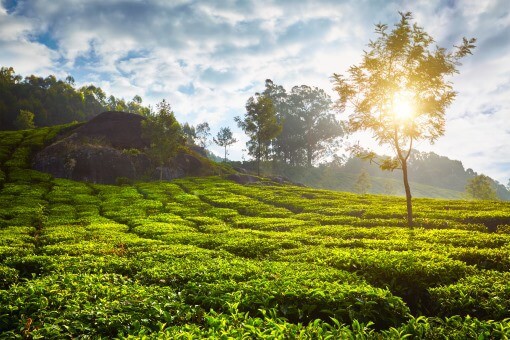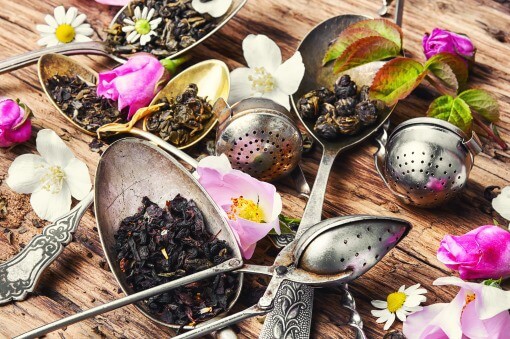No Results Found
The page you requested could not be found. Try refining your search, or use the navigation above to locate the post.
The page you requested could not be found. Try refining your search, or use the navigation above to locate the post.
The page you requested could not be found. Try refining your search, or use the navigation above to locate the post.
The page you requested could not be found. Try refining your search, or use the navigation above to locate the post.
The page you requested could not be found. Try refining your search, or use the navigation above to locate the post.
For purchases over 599 kr.
2 - 5 business days

Darjeeling tea is from the Darjeeling region in West Bengal, India.
It is made as black, green, white and oolong tea.
When brewed properly, it produces a thin, light colored blend with a soft floral aroma.
Unlike most Indian teas, Darjeeling tea is usually made from the fine-leaved Chinese variety of Camellia sinensis var. sinensis, rather than Camelia sinensis var.
Assamica.
It is known for having larger leaves.
Traditionally, Darjeeling tea is made as black tea.
However, Darjeeling oolong and green teas are becoming more common, and an increasing number of plantations have also started to produce it as white tea.
Darjeeling teas are selected and sorted by size and quality.
Each tea is therefore classified as follows:
It contains whole leaves and is of the best quality (we believe) when labeled;
SFTGFOP: Super Fine Tippy Golden Flowery Orange Pekoe.
FTGFOP: Fine Tippy Golden Flowery Orange Pekoe
TGFOP: Tippy Golden Flowery Orange Pekoe
When the leaves are broken or consist of small tea leaves or pieces of large leaves, it is labeled:
FTGBOP: Fine Tippy Golden Broken Orange Pekoe
TGBOP: Tippy Golden Broken Orange Pekoe
FBOP: Flowery Broken Orange Pekoe
BOP: Broken Orange Pekoe
The following designation means that it consists of even smaller size leaves than above;
GFOF: Golden Flowery Orange Fannings
GOF: Golden Orange Fannings
The lowest classification ‘Dust’, denotes that it consists of small pieces of tea leaves and tea dust.
D: Dust


The taste of Darjeeling tea is as mysterious as the Himalayan mountains.
The unique flavor of Darjeeling comes from the age of the tea bushes, soil conditions and its intricate harvesting and processing methods.
In general, however, it can be described as lighter and less fermented and “bitter” than most black teas, but more layered and complex than most green teas.
Shades of difference are what mark Darjeeling Tea – from delicate vegetal, mossy, fruity and citrus flavors to its nutmeg and fruity taste.
It can therefore have sweet tasting notes that are similar to nutmeg wine.
When you buy Darjeeling tea from a specific plantation, the flavor of the tea will vary depending on when it is harvested.
Pure Darjeeling tea is globally recognized as “The Champagne of Teas”.
The aroma and taste of Darjeeling tea is therefore unrivaled and in a league of its own in the tea world.
The page you requested could not be found. Try refining your search, or use the navigation above to locate the post.

Tea lovers know that Darjeeling tea is something special.
It is only grown in one region of the world, the Darjeeling district in India.
It is this uniqueness that makes it more sophisticated than other teas.
It undergoes a special process that results in a partial oxidation.
The result of this is a flavor that is sophisticated and full of nuance.
The brewing of this beverage must be done with more care than other teas.
The substances responsible for the subtle aroma and flavor can easily be damaged by impurities.
Therefore, never use detergent to clean a jar, jug or cup that will be used for Darjeeling tea.
Instead, wipe the inside of the container with a clean, damp cloth to remove residue and other impurities.
Feel free to rinse this container with boiling water first.
The next thing you need to carefully consider is the water.
You should always start with cold water.
Good quality water is fine, but take the time to run the tap to clean the pipes.
We prefer and would recommend using bottled water, spring water or filtered water.
Never make tea with distilled water or hot water straight from the tap.
It kills the quality of the brew.
The water temperature is just as important.
To get the most balanced flavor, use water just below boiling point.
Simply bring the kettle to a boil, then turn off the heat and let it sit for a moment while you warm your cup or jar.